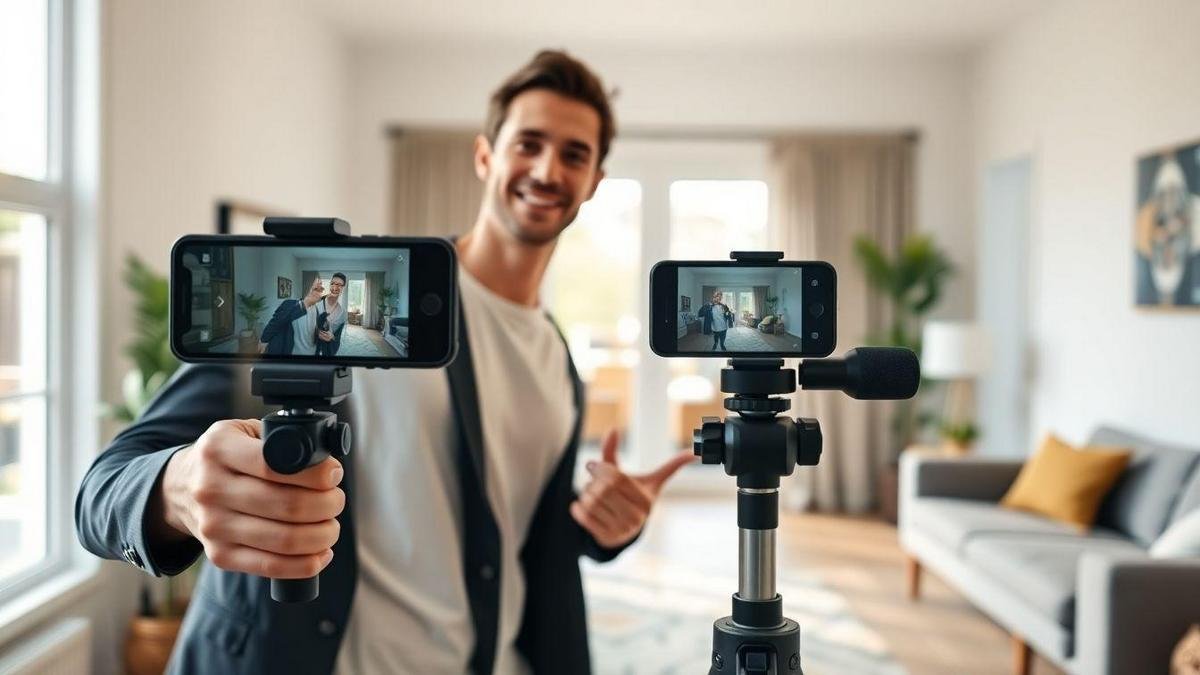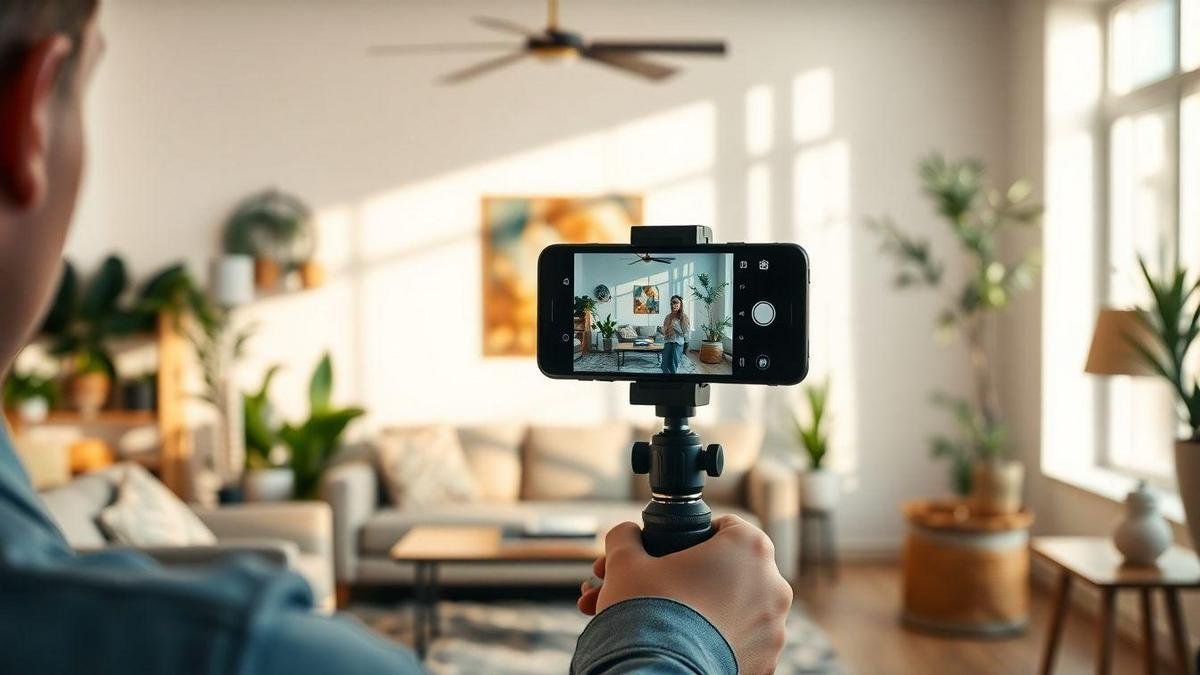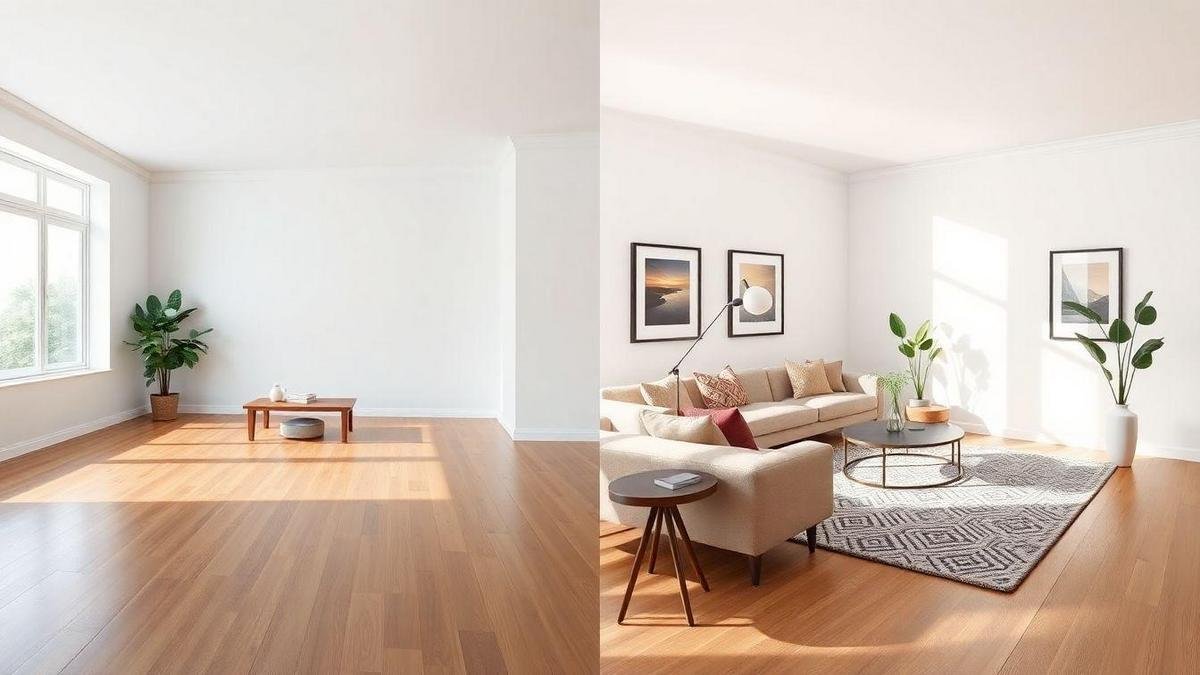TikTok real estate marketing strategies give agents a clear playbook for selling homes with short videos, neighborhood stories, virtual staging, and smart ads. The guide delivers bite-sized tactics on content cadence, video hooks, caption and hashtag best practices, templates for fast uploads, KPI tracking, and ethical disclosure. It’s practical, direct, and built for busy agents who want fast, repeatable results.
Key Takeaway
- Post short, engaging home tours that highlight key features
- Use trending sounds and strong hooks to increase views
- Add clear calls to action to generate leads
- Show local neighborhood scenes to build trust
- Respond to comments quickly to nurture interest

Core TikTok real estate marketing strategies for agents
Agents should start with strong hooks. A quick visual in the first two seconds can make or break a view: bright shots, a clear title card, or a surprising fact about the listing. Short, punchy opening lines paired with a clear call to action drive viewers to watch longer and interact.
Mix formats: walk-throughs, neighborhood tours, before-and-after clips, client stories, and quick tips. Variety keeps the feed fresh and helps the algorithm. Reuse one long shoot as several short clips so a single session yields multiple posts — a tactic that aligns with broader real estate video marketing strategies.
Ride trends but stay authentic. Using a trending sound or challenge is smart, but the message must match the brand. When agents blend trends with useful info, they win views and build leads. These core TikTok approaches convert attention into inquiries and slot neatly into wider digital marketing strategies for listings.
Content cadence and posting frequency
Consistency beats perfection. Agents who post on a schedule build momentum. Short clips posted daily or every other day keep a profile active and visible.
Batching saves time. Record several videos in one session and edit later. Use simple scheduling and automation so content queues reliably — a workflow strengthened by marketing automation tools.
A simple plan:
- Pick three content pillars (e.g., listings, tips, neighborhood)
- Batch-record 6–9 clips per pillar each week
- Schedule 3–5 posts per week, mixing pillars
- Review performance and adjust the next week
Target audience and listing goals
Define who you want to reach first: first-time buyers, downsizers, investors, or renters. Each group watches different content. First-time buyers like financing tips; investors want rental yield and market trends. That clarity guides tone and visuals and informs content aligned with content marketing for investors.
Match the listing to the audience and goal. A luxury home benefits from slow, cinematic footage; a starter condo needs fast facts and affordability hooks. Use short captions that highlight the key benefit for that audience.
- First-time buyers: quick financing tips, neighborhood pros/cons
- Sellers: staging before/after, pricing explanations
- Investors: cap rate examples, rental demand snippets
- Local movers: commute times, school highlights
KPI tracking and analytics
Watch views, average watch time, engagement rate (likes, comments, shares), follower growth, and link clicks. Short watch time with high clicks means the title was strong but delivery lacked. High views with low engagement suggests revising the call to action. Tie these metrics back to overall marketing ROI so spend and effort map to real results.
| KPI | What to do next |
|---|---|
| Low watch time | Shorten the intro; add a stronger hook in first 2s |
| High views, low engagement | Add clearer CTAs; ask a question in caption |
| Slow follower growth | Post consistently; test content pillars and trends |
| High saves/clicks | Create follow-up content and a lead capture link |

Short-form property videos that drive engagement
Short-form clips work like a quick handshake: warm, confident, memorable. Open with a strong visual hook in the first two seconds — a sunlit kitchen, sweeping city view, or quirky detail. When the intro lands, move fast: quick cuts, simple captions, and a clear CTA keep viewers watching and tapping the profile.
Pick one story per video — a feature, a vibe, or a lifestyle moment — and stick to it. For example, morning coffee on the balcony will outperform a scattered tour. Use platform-savvy tactics from mobile-first real estate marketing to ensure videos read quickly on phones.
Metrics matter. Track watch time, completion rate, and comments more than vanity views. Clips that loop well get organic boosts. Test hooks, thumbnails, and captions on two or three videos per week; small adjustments often bring big jumps in engagement.
Ideal video length and format for short-form property videos
Shorter is smarter. Aim for 15–30 seconds when showing a single feature or mood. If the story needs more room, 45–60 seconds works, but each extra second must add value. Cut anything that doesn’t move the story forward.
Format matters: vertical 9:16 is the default for TikTok and Reels. Crop with that frame in mind and export at high bitrate with clear titles so the clip reads fast on small screens.
Mobile framing and vertical edits
Mobile viewers scan fast and hold the phone close. Frame shots tight on the focal point: a stove, window view, or designer sink. Close-ups and handheld pushes make spaces feel lived-in. Think of the camera as the guest’s eye, walking through the room.
Edits must be snappy and rhythmical. Match cuts to audio beats and keep transitions simple. Stable moves and short pauses let the brain rest and notice details.
Caption and hashtag best practices
Captions should be short, actionable, and local. Use one-line summaries, a clear CTA, and a location tag when possible. Lead with a short hook line then CTA (e.g., See inside → DM for tour). For hashtag selection and structure, follow tested hashtag best practices tailored to property posts.
- Use 3–5 focused hashtags: one location, one property type, one trend, one branded tag
- Add emojis sparingly to draw the eye but not distract
- Name the neighborhood or street for local search
- Include the sound name or trend tag if using viral audio

Crafting property walkthrough hooks to keep viewers
Open with a bold, clear hook that grabs attention in a single breath. Start with a surprising fact, a quick face-to-camera line, or a flash of the best room — anything that promises value right away. For platforms like TikTok, combining that magnet with these short-form tactics helps the content travel farther.
Plan each clip around one hero idea: a view, a feature, or a price point. Map the clip so the promise made in the first seconds is paid off later. This builds trust and boosts retention, which signals algorithms to recommend the video.
Track retention graphs, test two hooks, and swap what fails. Small changes — a sharper cut, a brighter frame, a more direct statement — can lift views substantially. For fresh prompt ideas and cadence inspiration, see the social media content ideas collection.
| Hook type | Quick example | Best use (seconds) |
|---|---|---|
| Visual tease | Pan into skyline from balcony | 0–3 |
| Open question | “Guess the price?” | 0–2 |
| Surprise reveal | Hidden storage door opens | 0–3 |
Open-loop intros and visual teases for property walkthrough hooks
An open-loop intro starts a story and closes it later (e.g., This kitchen hides a secret, then show the secret mid-video). Visual teases do the same with images: a slow reveal of a dreamy tub or a flash of a gourmet stove. These build watch time.
Practical hook prompts:
- “Wait for the view” — quick balcony flash, reveal later
- “You won’t believe this closet” — start small, show full closet later
- “Guess the price” — show key features, reveal price near end
- “Hidden feature inside” — tease a secret space, reveal mid-clip
- “Before and after in 15s” — quick before shot, big after reveal
Showcasing key features in the first three seconds
Show the engine, not the hood. If the kitchen is the selling point, show the island and a steaming espresso shot in the first frame. The viewer should instantly know why the property matters. Those first three seconds are a promise of what follows.
Repeatable steps: pick the hero feature, frame it tight and bright, add a short bold caption, then cut to the payoff.
- Pick the hero feature (view, kitchen, master bath)
- Frame a strong close-up or motion shot in bright light
- Add a bold caption and cut to the next scene for payoff
Use of text overlays and quick cuts
Short, bold captions label rooms or call out features while quick cuts keep tempo lively. Avoid long blocks of text; one line at a time reads fast and guides the eye. Timed with a reveal, overlays act like signposts that move the narrative forward.

Neighborhood lifestyle content to connect with buyers
Craft neighborhood lifestyle stories that feel like a friendly tour: morning routines, weekend rituals, and where people grab coffee. This gives buyers a clear picture of daily life, so the home fits into a real rhythm rather than a staged scene. Short clips and candid photos make the message authentic and easy to digest.
Mix facts with feeling: school zones, park benches, and food trucks become scenes in a small film. A single sunset image from a local hill can spark more interest than a long list of features. Vivid moments build emotional connection fast.
Treat neighborhood posts like invitations, not ads. Highlight places where neighbors meet, safe walking routes, and name coffee shops by personality to build local credibility and trust — a practice that pairs well with broader social media marketing for real estate programs.
Highlight local amenities and commute times with neighborhood lifestyle content
List real amenities — playgrounds, gyms, grocery runs — and tie each to the buyer’s day: 5-minute walk to the farmer’s market. Present commute info clearly: typical drive times, transit options, and peak-hour differences. Simple visuals or short clips of the route make claims believable.
Interview neighbors and local business owners
Interviews add a human layer. Record a neighbor saying why they chose the block or a café owner explaining the morning rush. These voices act as social proof. Keep interviews short and friendly, asking two or three direct questions and always getting consent on camera.
Geo-tags and local hashtags for reach
Use geo-tags and local hashtags to pull posts into neighborhood searches and nearby feeds. Tags like the neighborhood name, nearby landmarks, and event hashtags boost reach and engagement so content lands in front of active locals and out-of-town buyers scanning for lifestyle fits. Pair local tags with geographic SEO tactics from real estate SEO to improve discoverability across platforms.

Virtual staging before and after to boost listing appeal
Virtual staging turns an empty room into a story. Show a lived-in look beside the before shot to spark imagination. Buyers react to context; seeing furniture and color helps them picture daily life, often raising click-through rates and showing requests.
A clear before-and-after set acts like a movie trailer: before proves footprint and light, after shows function and style. Use the same angle, lighting, and scale for both shots and keep edits realistic. Label staged shots (see disclosure) and keep originals for inspections and serious buyers.
When to use virtual staging vs empty photos
Virtual staging fits vacant, hard-to-picture spaces. Empty photos work when architecture or finishes sell the place — lofts with beams or dramatic views may need minimal alteration. Stage to sell lifestyle; show empty to sell space.
Best file types and resolution for TikTok
For TikTok, go vertical and keep it sharp. Use MP4 with H.264 codec, export at 1080 × 1920 px (9:16). This ties directly into TikTok real estate marketing strategies by matching platform norms.
Recommended export settings: MP4 (H.264), 1080×1920 px, 30 fps, bitrate ~4–8 Mbps, sRGB color, max file size under platform limit.
Disclosure and ethical labeling requirements
Label staged images clearly as “virtually staged” or “digitally furnished” in the caption or listing. Honest labeling avoids surprises at showings and builds trust; this practice supports a consistent branding strategy across channels. Keep originals and be ready to show real shots on request.

Listing highlight templates for consistent branding
A solid set of listing highlight templates acts like a storefront sign. Consistent fonts, colors, and logo placement make every listing familiar. Templates cut busywork and free time for showings and negotiations.
Templates also help teams stay aligned. Shared templates keep brand voice unified across agents and assistants, enabling batch production that matches the agent’s style. For ready-made ideas and structure, review creative templates in the social media content library referenced earlier.
Editable templates for quick uploads
Editable templates let agents swap images, text, and colors without design skills. Common elements:
- Hero image area
- Price and headline bar
- Agent contact overlay
- Quick features bullets
- Call to action
Save versions for luxury listings, rentals, and open houses to upload in minutes.
How TikTok real estate marketing strategies shape templates
TikTok favors short, punchy content with fast cuts and clear hooks. Adapt templates: snappy captions, big readable text, and an early visual hook in the first 1–3 seconds. Place critical text in the safe zone and leave room for stickers or trending sounds so templates work across TikTok and Reels. Cross-channel consistency with Instagram marketing and YouTube marketing formats helps scale assets.
Template folders and batch production
Organize folders by format (video, carousel, story), property type, and campaign so an assistant can pull the right set, populate fields, and queue uploads. This reduces friction and keeps posts moving at scale.

Writing call-to-action captions for listings that convert
A strong CTA states the next step in plain words. Short phrases such as Call to book or Schedule a tour work better than long lines. Pair a clear action with a specific benefit: lower price, fast move-in, or rare view. A quick stat or one-line testimonial adds trust.
Tone and platform shape the caption. Use punchy lines for social video and slightly fuller text for listing pages. Mix formats and watch performance to learn which voice sells best. Use simple, trackable links and tools from the lead generation tools set to measure results.
Direct CTAs versus soft CTAs
Direct CTAs push immediate action: Call now, Book a showing, or Apply today — ideal for hot leads. Soft CTAs invite gentler steps: Learn more, See more photos — useful for cold leads. Use soft CTAs on TikTok, then follow up with direct CTAs in links or messages.
Adding contact options and links in call-to-action captions for listings
Give at least two clear contact routes: phone, WhatsApp, and a short booking link. Use simple, trackable URLs (UTMs) so the team sees what works. Including a direct booking link raises responses across channels and ties into website performance improvements from website optimization for leads.
Testing CTAs with A/B caption experiments
Run small A/B tests changing one element at a time: the verb, the benefit, or the contact method. Test each caption for a week or until clear differences appear, then roll out winning phrasing across similar listings.

Using trending audio for real estate without losing authenticity
Treat trending audio like a spice rack: a little lifts a listing, too much masks the flavor. Pick sounds that match brand voice and property story. A bright beat can make a small studio feel lively; soft piano can show calm in a family home. Let the home be the star and the sound support it.
Track which sounds get saves and shares, then test them on one or two posts before broader use. Authenticity wins — if a sound clashes, viewers notice. For collaboration ideas and partnership reach, consider occasional influencer marketing to amplify authentic audio-driven posts.
Finding and tracking trending audio for real estate
Find trends on TikTok’s For You page and Creative Center. Save clips and note performance for similar listings. Keep a simple tracking routine: save sounds, note where they worked, record basic metrics, and test remixes weekly.
Quick tracking checklist:
- Save trending sounds to a folder
- Note where the sound worked (loft, condo, family home)
- Record basic metrics: views, saves, leads
- Test one remix per week
Matching audio mood to property style
Match mood like a stylist picks clothes: upbeat electronic for modern lofts, mellow acoustic for bungalows. Consider demographics: younger buyers may prefer trending pop; older buyers may prefer familiar instrumentals. A good match helps viewers imagine living there.
Music licensing and platform rules
Verify rights for commercial use. TikTok offers in-app sounds cleared for casual posts, but agents promoting listings should use royalty-free tracks or a platform’s licensed library to avoid copyright issues.

Paid TikTok ad targeting for buyers
TikTok ads work best when they focus on intent and emotion. Treat each ad as a short invitation: quick visual hooks, local scenes, a clear price range, and a simple CTA. Pairing creative with TikTok real estate marketing strategies turns scrollers into leads.
Creative must match audience stage. For cold audiences, use lifestyle clips (neighborhoods, schools, cafes). For warm audiences, show virtual tours, floor plans, and testimonials. Ads that feel like organic posts get more saves and shares.
Measure cost per lead, view-through rates, and lead quality. Run A/B tests on hooks and CTAs, and scale winning ads rather than relying on gut instinct. Combine paid tactics with broader paid channels like PPC advertising and platform-specific guidance such as Facebook ads to coordinate cross-platform spend.
Audience sets: lookalikes, interests, and geotargeting for paid TikTok ad targeting for buyers
Lookalikes built from past buyers or high-intent leads are valuable. Add interest targeting (home renovation, interior design, moving tips) and layer geotargeting to zoom into zip codes or neighborhoods.
Steps:
- Upload a buyer list and create a 1–3% lookalike
- Add interest filters relevant to home search
- Overlay geotargeting to limit reach to priority areas
Combining organic behind-the-scenes agent branding with ads
Organic content builds trust faster than a landing page. Use behind-the-scenes clips — staging, client reactions, open house prep — to warm audiences. Run ads to people who engaged with organic posts in the last 14–30 days. Keep the ad creative consistent with organic content to increase CTR and reduce cost per lead. Stitch this together with retargeting campaigns and simple remarketing flows to capture interested users.
Budgeting, bidding strategies, and ROI tracking
Start with a test budget and scale winners 20–30%. Use TikTok’s conversion optimization (oCPM) for lead goals or a bid cap when costs spike. Track ROI with the pixel and UTM tags, and match cost per lead to expected commission and lifetime value. For deeper performance mapping across channels, review cross-channel ROI approaches in real estate marketing ROI guidance.
Quick checklist: TikTok real estate marketing strategies
- Post vertical videos (9:16) with strong hooks in the first 2 seconds
- Use 15–30s clips for single features; 45–60s only if every second adds value
- Batch-record and schedule 3–5 posts per week across content pillars
- Track watch time, completion rate, engagement, and cost per lead
- Use geo-tags, local hashtags, and clear disclosure for virtual staging
- Run small A/B tests on hooks, CTAs, and sounds; scale winners
Conclusion
This guide gives agents a compact, actionable playbook: use strong hooks, short vertical videos, and clear CTAs to turn casual views into leads. Keep the rhythm steady with consistency and batch production, and reuse content with dependable templates that save time and strengthen brand recognition.
Metrics matter: track watch time, engagement, and cost per lead, then iterate quickly — small tests, sharp edits, and honest labeling move the needle. Blend trends with genuine storytelling and local scenes so content feels like an invitation, not a hard sell.
Think of the strategy as a well-oiled storefront: neat templates, bright displays, and a welcoming voice. Pair that with quick experiments and clear KPI actions, and the results compound. For more practical guides and templates on social video and channel strategy, explore the broader social media content ideas and video marketing strategies collections.

No responses yet